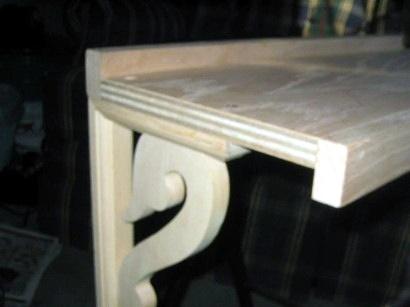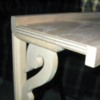I would not use MDF for a span of any sort. In a span, the top of the board is under compression and the bottom is under tension. Because MDF has no grain, the only thing holding the tensioned part together will be the glue. Think about how cheap bookshelves sag over time; those are MDF or something a lot like it.
Half inch plywood sounds a little wimpy to me. The thicker the plywood, the farther apart you can put your wall brackets. I might go with 5/8". The more plys it has the less likely it will be to warp. I have 5-ply 5/8" plywood on my layout, and I wish I had gone with a better grade. Not thicker, just more layers.
For the 5'9" span, I would go with solid wood. If you think about it, in plywood half of the grain runs at 90 degrees to the direction of the tension, which means that only half of the plywood is helping you. With solid wood, you get the whole thing. I would use a pine board of 1" nominal (3/4" actual) thickness. Then I would cut a couple of strips, also out of 1" pine, maybe an inch and a half wide, and as long as the pine board. Glue and screw them to your board, running the long way. Whether you fasten them above or below the board is your choice. Think of what a girder bridge looks like on a real railroad, that is the basic idea.
When buying boards, look for something that has straight grain. Look at the edge of the board. The grain lines should make it all the way from one end to the other; if it looks like the grain runs off the edge of the board, leave that one there. Small knots won't hurt anything, but avoid boards with large knots on or near the edge. Look at end of the board to make sure it is not cut right out of the middle of the tree. Those like to warp, or twist, or split, after you get them home. Then, since you don't need much, instead of rifling through the pile of cheap stuff, you might just buy a better grade board and be done with it.







